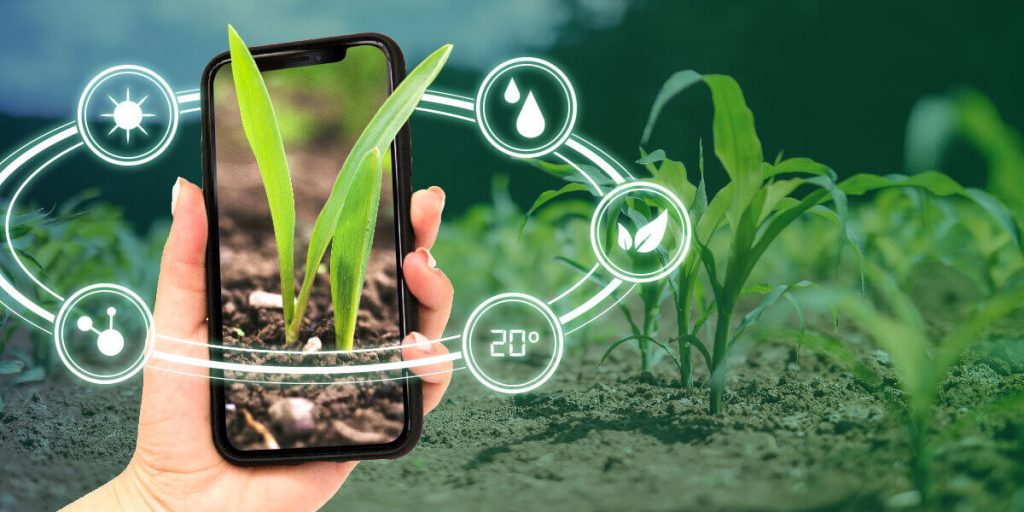In an era of accelerating technological change, few industries are immune to innovation. Even agriculture, rooted in centuries-old traditions, has embraced digital transformation. Ag tech provides critical tools to meet these challenges, supporting farms of all sizes – from family-run plots in the Midwest to large-scale operations in California’s Central Valley.
Ag Tech, which stands for “agricultural technology,” represents a blend of cutting-edge innovations and timeless farming techniques. It encompasses a range of technologies from automated tractors and GPS navigation devices to drone monitoring, Internet of Things (IoT) sensors and artificial intelligence analytics. These tools are redefining the way farms are managed and operated.
Today, agricultural professionals are under increasing pressure to balance productivity, sustainability and profitability. This technology is not just a luxury; it is fast becoming a necessity. This convergence raises a compelling question: what is ag tech? Next, I’ll walk you through information about AgTech and its future trends to help you better understand it and utilize it.
Contents
Real-World Examples of Ag Tech
To appreciate Ag Tech’s value, we need to explore how it’s applied in everyday farming scenarios:
Dairy Automation: Modern dairy farms leverage robotic milking machines, cup removers, and automated wash systems, drastically reducing labor and improving animal welfare. Software platforms help manage herd health and production cycles.
Harvest Robotics: Autonomous machines now harvest crops like strawberries and apples with precision and consistency, reducing the need for seasonal labor and minimizing crop damage.
Smart Crop Management: IoT devices monitor soil moisture, temperature, and nutrient levels, giving farmers granular insights for efficient irrigation and fertilization.
Pollination Technology: Robotic beehives and drones help maintain pollinator health and coverage, addressing the decline in natural bee populations.

The Multifaceted Role of Ag Tech in Modern Farming
Ag Tech is not just about gadgets; it’s an integrated ecosystem influencing nearly every agricultural process.
Digital agriculture
Digital agriculture integrates diverse technologies to gather and leverage data throughout the agricultural supply chain, from production fields to consumer markets. It aids daily farm operations, improving traceability, security, and automation. Notable examples include electronic animal identification tags for monitoring livestock, targeted fertilisation using soil moisture sensors, and precise geospatial mapping via GPS.
Internet of Things
The Internet of Things (IoT) encompasses devices embedded with sensors designed to collect and transmit data through networks. Agricultural IoT includes GPS-equipped tractors for precision farming, environmental monitoring via weather stations, and electronic tags for individual livestock tracking. These interconnected devices communicate among themselves and the internet, facilitating automation and instant data accessibility. Farmers benefit by reviewing critical information through interfaces or dashboards, enabling timely and informed decision-making. For instance, farmers can easily check wind conditions or water levels remotely through smartphone applications, providing efficiency and peace of mind.
Before investing in IoT devices for farm management, considerations include:
Necessary connectivity type enabling device communication and internet access, influenced by the farm’s geographical features and location;Preferred methods of data access and the specific decisions it will inform;After-sales support, subscription fees, and the duration and personnel required for device installation;Multiple technologies facilitate data collection and automation of repetitive agricultural tasks.
Common examples such as weather monitoring stations and electronic identification systems depend on three primary components:
Sensors:Devices capturing various data types.
Networks: Wired or wireless systems transmitting collected data.
Computing hardware or software: Tools analysing the transmitted information, either locally or remotely.
Field-installed weather sensors capture important agricultural data, including location, weather conditions, soil moisture levels and electric fence integrity. sensors such as GPS units, moisture detectors and current monitors transmit data over Bluetooth networks, enabling comprehensive analysis and informed decision-making.
The data collected must be processed into actionable insights to improve farm efficiency and productivity. Electronic identification tags for animals such as sheep require scanning equipment to interpret and effectively utilize the data. Similarly, soil moisture and weather data need to be calculated on-site or transmitted to external analytical systems via suitable networks.
Networks such as Bluetooth and cellular facilitate efficient data transfer, enabling farmers to manage operations remotely. For example, weather stations automatically transfer data to storage devices, eliminating the need to manually check meters and supporting the analysis of historical weather trends.

Automation
Automation allows for remote task management, increasing efficiency and reducing physical labor. Farmers can automate the scheduling and execution of operations through applications or web interfaces. Examples of agricultural automation include automating livestock grazing using electronic identification tags and walk-behind weighing systems.
These systems can operate around the clock, minimizing reliance on manual labor, a key advantage in times of labor shortages. It’s more than just a machine; it’s a platform designed to improve farm productivity and safety.
Precision Agriculture
Farmers can use GPS, remote sensing and field mapping to analyze and respond to subtle changes in soil and crop conditions. The result: more accurate yield predictions, better crop rotations, and more optimized input use.
Data Analytics
The platform aggregates massive datasets from equipment, sensors and satellites. Machine learning algorithms then turn this data into actionable insights – from predicting crop diseases to forecasting market demand.
Biotechnology
Genetically modified organisms (GMOs) and gene-editing tools can improve crop resilience and yields, especially in the face of climate stress and pests. Meanwhile, biotechnology extends into pharmaceuticals, biofuels and plant innovation.
Tangible Benefits of Ag Tech
Every innovation must prove its worth in real-world results, and ag tech is already delivering on several fronts:
Improving productivity: with tools like AI, farms can gain real-time insights into operations. These insights help identify inefficiencies, track completed tasks, and adjust strategies on the fly.
Worker safety: agriculture remains one of the most dangerous occupations. Agricultural technology can address the risks posed by fatigue, chemical exposure and equipment accidents, and equipped with safety cameras and rollover detection, the likelihood of accidents can be significantly reduced.
Sustainability: Precise resource management reduces waste and environmental impact, while electric machinery eliminates diesel emissions and smart irrigation systems conserve water.
Reduced costs: While agricultural technologies can involve significant upfront costs, long-term savings on fuel, inputs and maintenance often outweigh the initial investment. Predictive maintenance tools can also reduce downtime and service costs.
Increased efficiency: From automated logbooks to multiple tractor coordination, ag tech optimizes labor allocation and equipment use. Farmers can now manage multiple machines remotely and increase production without the need for additional labor.

Why Ag Tech Is the Future of Farming
The global agricultural sector faces increasing challenges: population growth, climate change and resource scarcity. Traditional methods alone could not meet those needs, and agricultural science and technology enabled the sector to adapt and thrive.
With the global population projected to exceed 9 billion by 2050, sustainably increasing food production is inevitable, and Ag tech allows farmers to do more with less, utilizing data-driven insights to increase yields while conserving land and water.
In addition, climate change brings unpredictable weather patterns. Agtech tools can help farmers respond flexibly, whether through early disease detection, adaptive planting programs or real-time supply chain updates.
Crucially, Ag tech also promotes ecological stewardship. Electric tractors, biodegradable materials and precision fertilization practices contribute to healthier ecosystems and healthier soils.
Empowering the Next Generation of Farmers
Beyond the immediate benefits, Ag tech has reshaped the image of agriculture. It has attracted younger, tech-savvy people who see farming as a high-tech, impactful career path. Digital tools have made a new kind of farm management possible – less physically demanding, more analytical, and ultimately more rewarding.
Ag tech has also democratized access to expertise. Cloud-based platforms connect farmers to agronomists, equipment data, weather forecasts, and markets, leveling the playing field for small farmers and large operators alike.
Conclusion
Ag Tech is revolutionizing agriculture in every way – increasing yields, protecting workers, optimizing resources and ensuring sustainability. This is not a trend, but a paradigm shift that is reshaping the way we grow food, manage our farms and care for the planet.
Companies such as MINNUO exemplify how innovation can be both practical and visionary. MINNUO tractor is more than just a machine, it’s a catalyst for change, incorporating autonomy, safety and intelligence into one powerful platform.
As the agricultural landscape evolves, the adoption of Ag tech is not just an option, it’s a necessity for farmers who want to thrive in an increasingly complex world, and as we look to a future shaped by innovation, one thing is clear: Ag tech isn’t just about growing crops, it’s about adding to the infinite possibilities of agricultural development.

